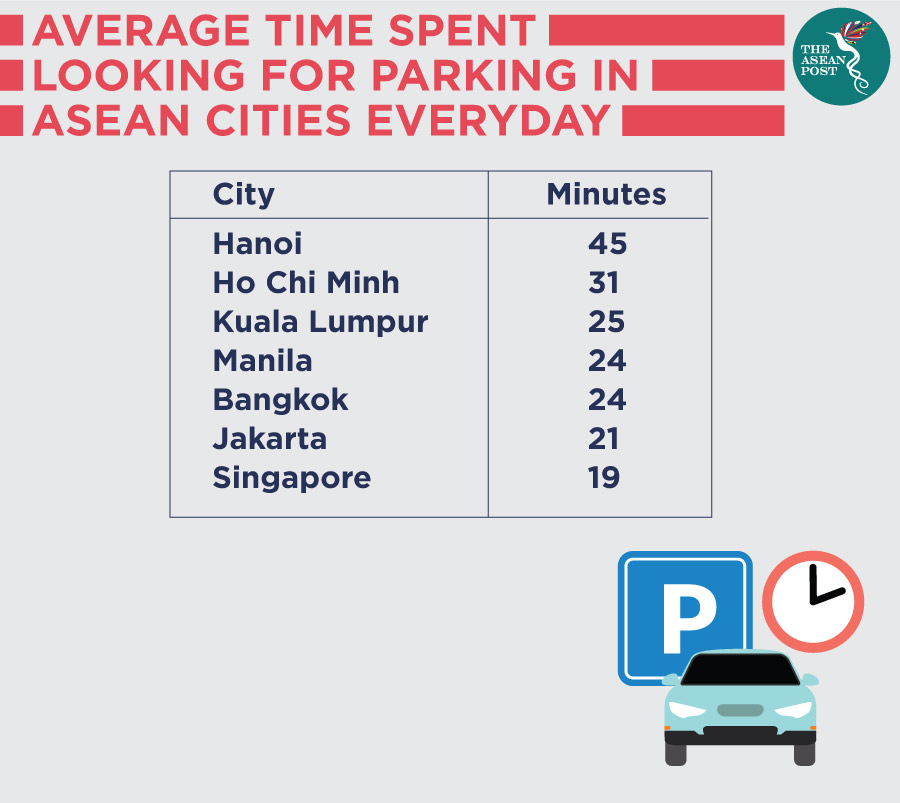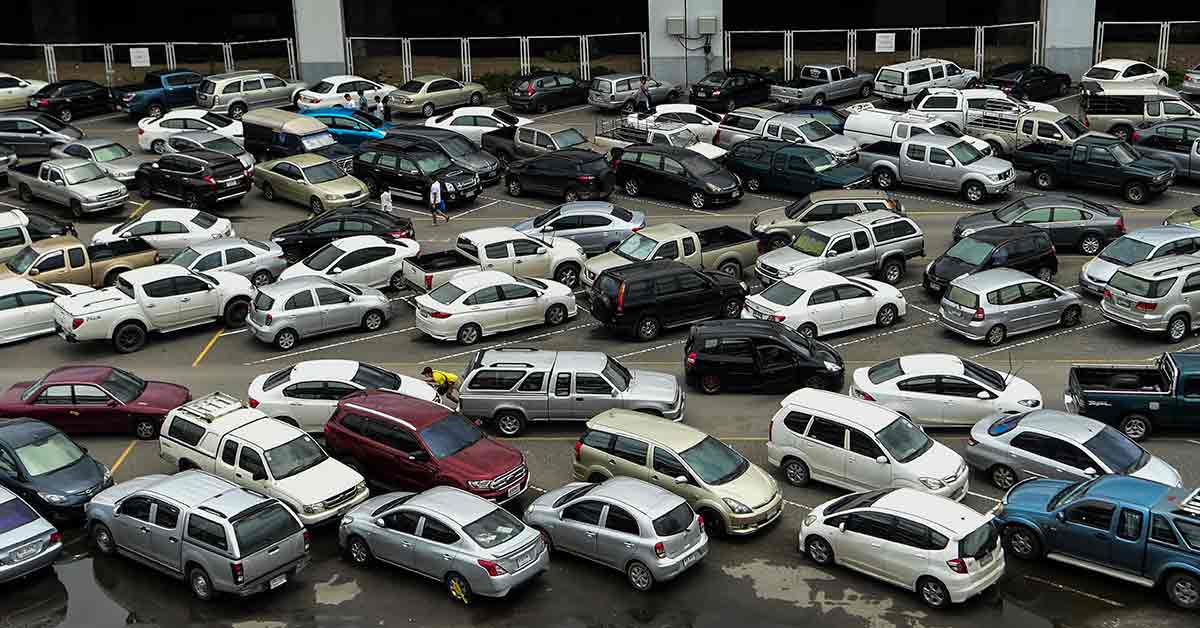The 2018 Revision of World Urbanization Prospects produced by the Population Division of the United Nations (UN) Department of Economic and Social Affairs (DESA) states that 55 percent of the world’s population lives in urban areas, a proportion that is expected to increase to 68 percent by 2050.
A populous city could mean an increase in vehicles on its roads. In 2018, new car sales in Singapore, Indonesia, Thailand, Vietnam, the Philippines and Malaysia registered 3.57 million units. This sales number is expected to grow to 4.29 million units in 2019, according to HIS Markit forecasts. This increase leads to congestion which rises when demand for travel exceeds the transportation networks’ maximum capacity. The Asian Development Bank (ADB) revealed that Metro Manila, in the Philippines is the most congested city in developing Asia.
Boston Consulting Group’s 2017 report titled, ‘Unlocking Cities,’ revealed that Vietnamese spend the most time looking for parking spaces. It took city dwellers in Hanoi and Ho Chi Minh an average of 45 minutes and 31 minutes, respectively, to find a parking space for their cars. The study also found that Filipinos and Thais spend an average of 24 minutes every day on parking, whilst Singaporeans spend the least time looking for parking with an everyday average of 19 minutes.
A further increase of vehicles on the road can pose infrastructural challenges where the need for efficient mobility and parking becomes apparent. Fortunately, ‘smart’ innovations such as the Internet of Things (IoT) and Big Data are set to transform consumer experiences with efficient parking services or ‘smart’ parking in cities.
What is smart parking?
Smart parking combines technology and human innovation to use as few resources as possible – fuel, time and space – to achieve faster, easier and denser parking of vehicles.
Sensor technologies and IoT-based devices can send live updates to drivers, the availability of parking spaces and the location through mobile apps. Drivers can also get information like the size of parking space and even nearby public transportation information if required.

Drivers who are directed straight to a parking spot will waste less time looking for one and subsequently reduce fuel consumption and money spent. Smart parking takes away the unpredictability of a parking spot, thus reducing stress and pressure in the process.
Smart parking is also moving towards automation, with several cities already doing trials on self-parking vehicles and robotic parking valets. Parking infrastructure is also expected to change in terms of space and efficiency because self-parking car technologies will result in parked cars requiring up to 60 percent less space than traditional parking lots.
Smart parking in ASEAN
Early this year, Singapore announced updates to its Smart Nation effort including the installation of smart sensors that can provide real-time availability of kerbside parking lots to drivers. Back in 2014, a systematic installation of sensors proliferated throughout the island which collects data to optimise the city’s transportation system including parking.
“This year, the Government Technology Agency, Urban Redevelopment Authority (URA) and Municipal Services Office will be trialling the installation of smart sensors so that we can provide real-time availability of kerbside parking spaces to people who are looking for space,” said Vivian Balakrishnan, Minister-in-charge of the Smart Nation Initiative. Singaporeans currently use the Parking.sg app, which was introduced in 2017 and allows motorists to pay for public parking electronically.
The Penang Smart Parking System (PSP) by HeiTech Padu Berhad (HeiTech) in Malaysia went into operation recently. As of today, HeiTech has installed a total of 1,031 sensors with an estimated implementation cost of RM30 million (US$7.16 million). The PSP is a private finance initiative (PFI) which means the company – not the state government – will pay for implementation and operation costs for a seven-year period. It is expected that by 2020, all 36,000 council parking spaces in the state of Penang will have vehicle sensors embedded into road surfaces.
High-rise buildings in ASEAN’s big cities are supporting the trend for vertical parking systems that are also implementing smart parking services. The first automated parking system in the Philippines was officially unveiled last August, at the SM Mega Mall Building A in Metro Manila. Earlier this year, the first mechanical automated parking system (MAPS) in Malaysia opened in Kuala Lumpur, which allows parked cars to be stacked one atop the other.
Singapore, on the other hand, is adding newer automated parking structures across its city, where the hassle of parking is handled for drivers automatically. At Changi Airport a Video-based Parking Guidance System (VPGS) was installed to improve car park management and to provide a stress-free parking experience for visitors. Video analytics allows the system to identify licence plate numbers, as well as to detect vehicle presence and the entry and exit timings of all parked vehicles in real-time.
While some ASEAN cities like Singapore have relatively advanced smart parking systems in place, other neighbouring cities are still in the beginning stage. But one thing is certain: across ASEAN, smart parking innovations are proving critical to solving parking woes in some of the world’s most congested cities.
Related articles:
Electrifying times for automotive industry
